The twenty-eighth edition of Miart, the international modern and contemporary art fair in Milan organized by Fiera Milano, has opened, and as has been customary for some time now at contemporary art fairs, we asked some galleries for the price of some interesting works that we selected. Noting once again how some galleries do not like the prices of their works to be published, here is our selection of fifteen works, each with its price (or price range).
Elena Ceretti Stein (Milan, 1989), is a multidisciplinary Italian-Israeli artist who creates installations in which she mixes painting, sculpture and video. Her paintings, like the ones exhibited here, which she calls “objects,” are also the result of installation thinking and are characterized by a strong sculptural and material dimension. The paintings on display were all made in 2024, but they are part of a research that began in 2019: the artist began making complete paintings and then covered them with a new painting that only allows a glimpse of what lies beneath. Sometimes she also repeats the process a third time with an additional image. Elena Ceretti Stein then excavates certain areas of the painting ocn the help of knife and chisel, so that the image hidden underneath can be seen, which at this point re-emerges to the viewer’s eye. This series of paintings are spaces of waiting, stillness, absence and silence. The only one who knows the landscapes hidden behind the layers of paint is the artist, but she believes that even what cannot be seen can equally be felt, filling the painting with energy. In painting she mixes organic and inorganic elements, using raw earth pigments within oil to create layers of color. Behind each thing lies another, in an endless alchemical game of symbols and deep meanings that coexist without excluding each other.

Alexis Soul-Gray’s (UK, 1980) artistic process of combining painting, drawing, and collage allows the artist to explore how imagination can illuminate a path through sadness and loss. Through an in-depth consideration of images from Italian Renaissance painting and advertisements idealizing family life found in popular British magazines, Soul-Gray selects scenes of women and children, opting for those that have an artificial quality, “where family is often faked but, somehow, felt.” Her works take shape as she draws disturbing moments that seem real, such as a wistful look or a playful gesture. To go beyond the surface of these scenic, stylized compositions, Soul-Gray erases the façade through rubbing, scraping or even the use of caustic chemicals such as bleach. He paints or creates collages over the figures in an attempt to restore to them an unstudied and penetrating humanity. Her works then become an immersion into the inner world, revealing layers of emotions and memories.
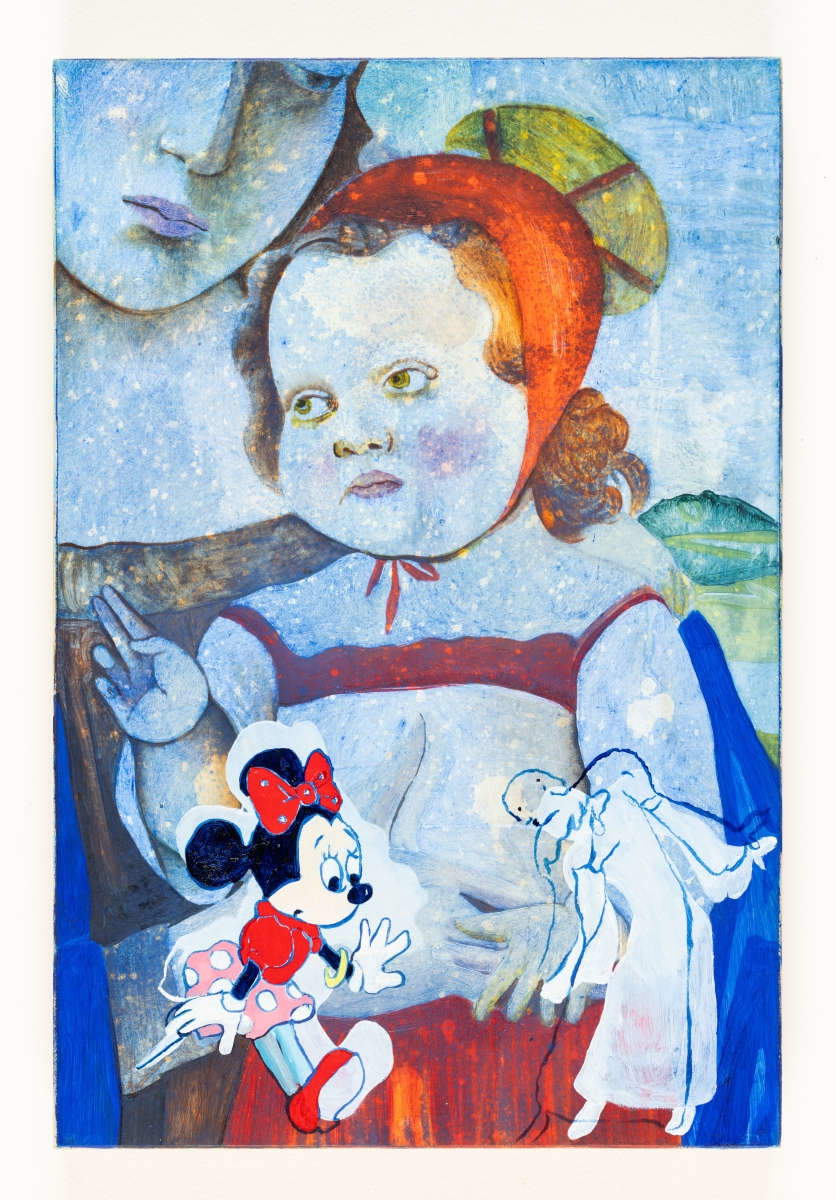
Robert Brambora (Halle, 1984) lives and works in Berlin. For the past year the artist has been working on a series of contemporary cityscapes inspired by Italo Calvino’s novel The Invisible Cities. These are landscapes that evoke feelings of loneliness and boredom experienced by the inhabitants of contemporary capitalist cities. In these works, Brambora depicts smog-covered city scenes to evoke the effects of climate change; fires, heavy rains and apocalyptic scenes create an atmosphere of science fiction and surreality. Above some of these painted landscapes float scattered data fragments and futuristic advertisements generated by artificial intelligence. These texts are applied using UV printing techniques, creating a visually striking effect that unites man and machine.
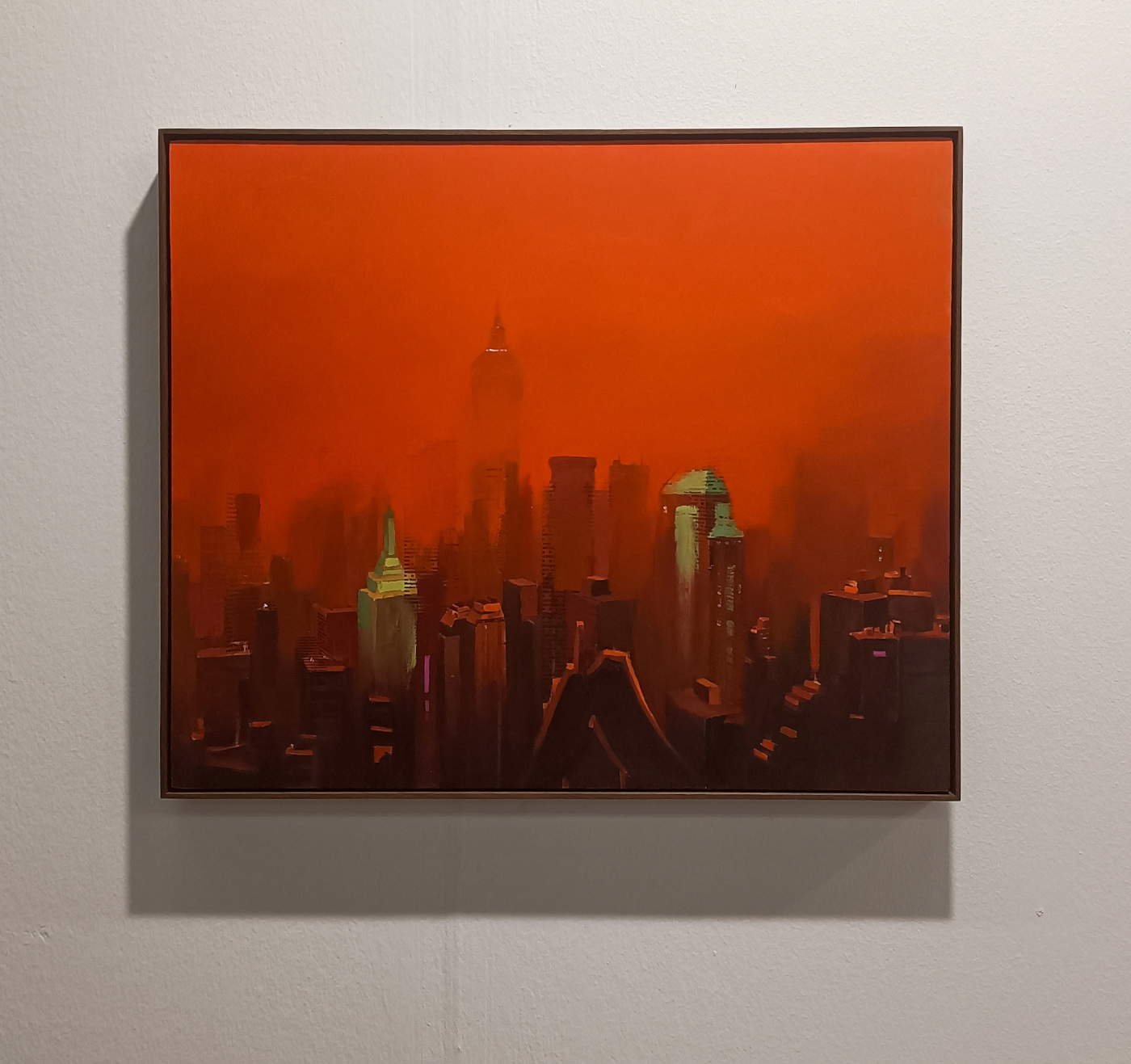
Flaminia Veronesi (Milan, 1986) offers a cross-section of the female presence in her artistic universe. Her vision is not limited to a simple reflection on women, nor is it reduced to a strictly feminist research, but focuses on the emblem of a feeling of “social motherhood,” a concept introduced by Maria Montessori. The figures drawn by the artist embody mutant creatures that, while retaining the traits of the female gender in their sexual appearance, are permeable to a metamorphic fluctuation that incorporates an expanded conception of the human being. Veronesi is thus committed to redefining the idea of “mother” and overcoming stereotypes that relegate it exclusively to the female sphere. Her artistic universe is steeped in visual, theoretical and conceptual references that oscillate between the real and the fantastic, the past, the present and the future. The artist blends feminist theories, references to art history and personal insights, thanks to her sensibility as a “modern shaman,” according to her own definition, posing as a kind of messenger of Pacha Mama, the mother soul of the Earth. Flaminia Veronesi’s costs range from 2,000 euros for the smaller watercolors (56 by 38) to 7,200 for the ceramic sculpture Mother Earth.
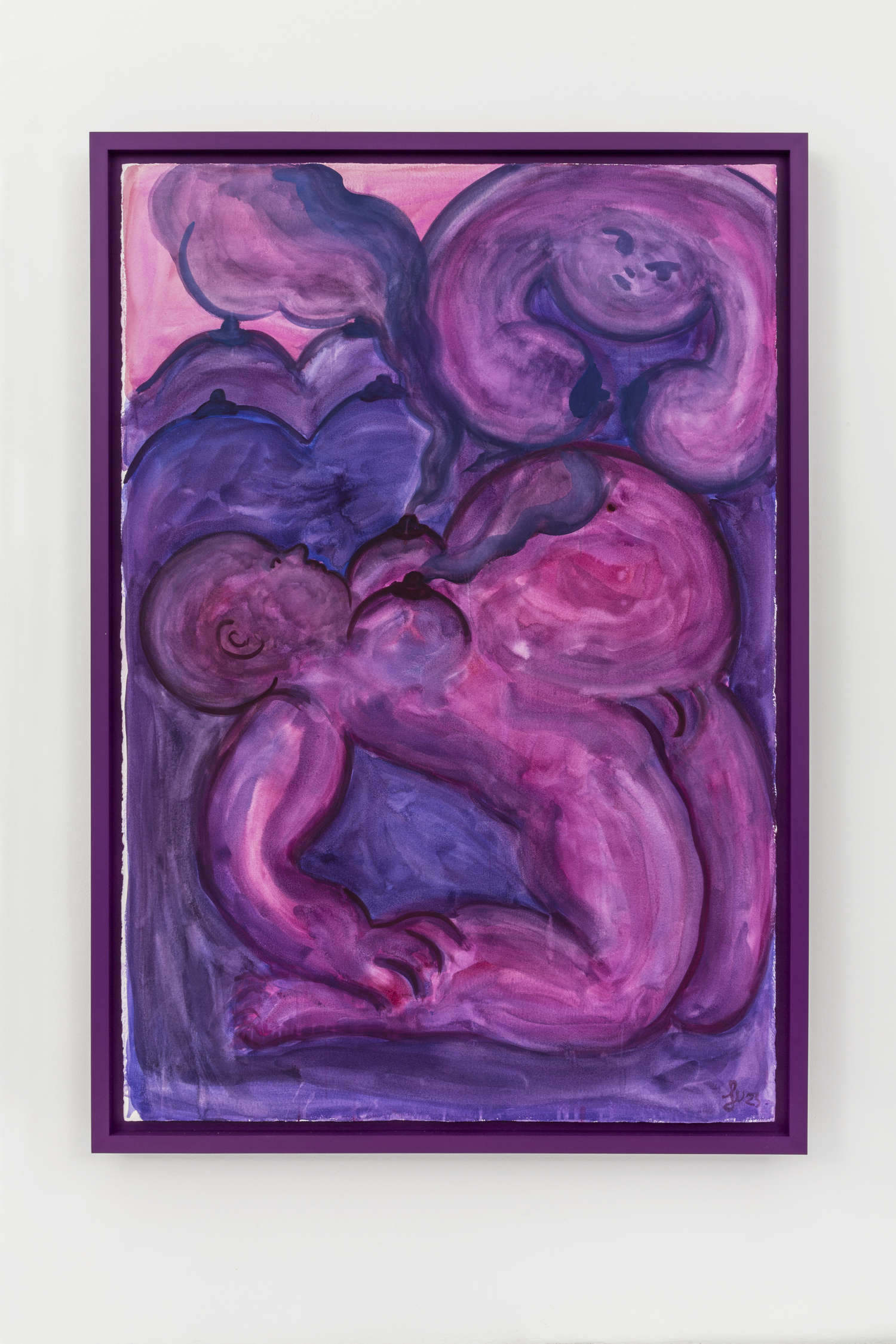
The particular works...with curtains constitute the new solo project of Austrian artist Anaïs Horn (born in Graz, lives and works in Paris), entitled The Windows, which was created during her residency at the International Studio & Curatorial Program in New York in 2022 and developed in Paris. In fact, the works on display take the form of windows, which here become places of the imagination and the boundary between public and private, between interior and exterior space. Drawing from drone footage, the images were transferred to transparent acrylic glass and framed with aluminum frames; they are then covered with hand-painted silk curtains mounted on aluminum curtain rods. Adorned with precious stones and tassels, they serve as protection against outside malevolence. Horn creates intimate, often site-specific settings in which autobiographical narratives or those of other female figures aim to trigger reflections on the present and how personal memories connect to objects and spaces. Anaïs Horn’s work is dedicated to Josephine Hopper, wife of the celebrated American artist: the juxtaposition of unconventional viewpoints and delicate textiles conveys a sense of loneliness, echoing the melancholy of Hopper’s urban landscapes.

French artist Amélie Peace (Paris, 1997) focuses in her paintings of various sizes on the experience of touch and the human need for physical connection, depicting moments meant to sit on the border between tenderness and cruelty. His are psychophysical dialogues intended to explore emotional, sexual and gender-related experiences. Her characters, often intertwined, give a sense of physical dependence, as if her figures share a body, emphasizing how each exchange with another person alters one’s sense of one’s physical self. Recurring motifs are the hands that guide the viewer through the intricate narratives depicted in his works. Also amplifying these themes is the intensity of color that characterizes all her paintings: what it means to speak without words and the power that can be found in the silent language of gesture. Peace essentially depicts the complexities of human emotions.

Katlego Tlabela (Pretoria, 1993) has always devoted her attention to multidisciplinary technical and creative processes, exploring painting, sound, photography and sculptural installations by finding innovative ways to integrate print-related elements into each of her disciplines. His artistic interests range from the complex social and political dynamics of post-apartheid South Africa to the African landscape and the United States of America. Her works address themes of resistance, protest, dialogue about race, and positive ways of representing the black body and experience, often reinterpreting history and connecting it to contemporary events. Since 2020, her artistic practice has focused exclusively on painting, portraying fictional but realistic scenes that feature the black elite as their subject. In her works, Tlabela often pays homage to historically significant black artists, thus creating a dialogue between past and present.

Kenyan artist Thandiwe Muriu (Nairobi, 1990) takes us on a deep journey into the world of women in contemporary Africa, reinterpreting African portraiture. Her works, inspired by the covers of leading fashion magazines and Kenya’s rich cultural history, are meant to be an ode to the natural beauty of the women with whom she identifies. Using striking and intricately patterned fabrics that often evoke the traditional textiles of different African cultures, Muriu photographs her subjects by making them emerge from vibrant backgrounds that create hypnotic illusions. Through his CAMO series (to which the work A cicle of joy also belongs), Thandiwe aims to celebrate his African heritage and addresses crucial issues such as identity and self-perception. His works advocate acceptance and love for the daily lives of the people of Nairobi and, more broadly, all of Africa.
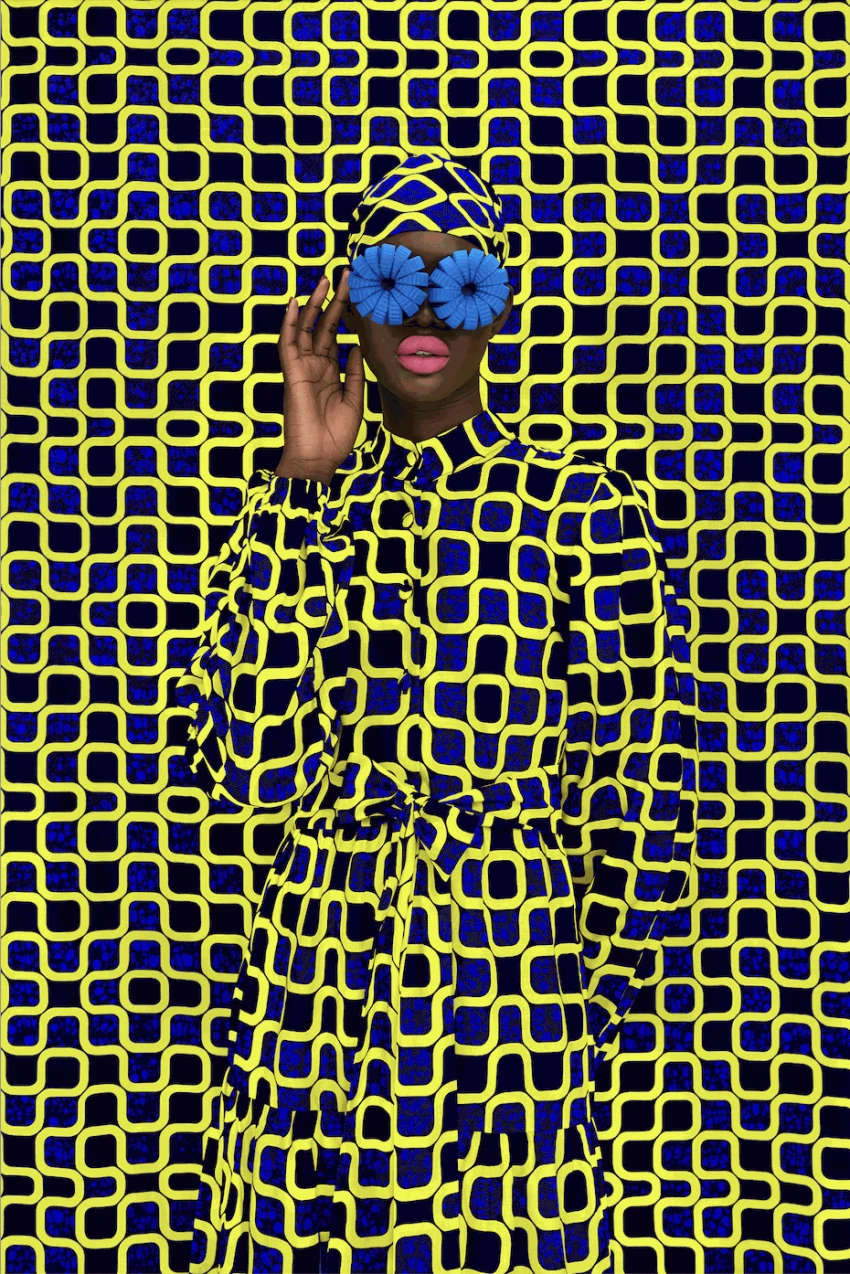
Cardelli & Fontana brought to Miart several of the gallery’s leading contemporary artists, such as Beatrice Meoni and Mirko Baricchi, as well as a selection of Italian geometric abstractionism from the 1950s and 1960s, a field in which the Sarzana-based gallery specializes. Among the works on view at the booth is a medium-format Composition by Mauro Reggiani (Nonantola, 1897 - Milan, 1980), one of the first Italian abstractionists, who signed the first manifesto of Abstractionism in the 1930s. The work presented by Cardelli & Fontana dates from 1955: just the following year, the Venice Biennale would dedicate a solo room to Reggiani. The gallery moreover is among the very few to publicly display the prices of the works in its booth.
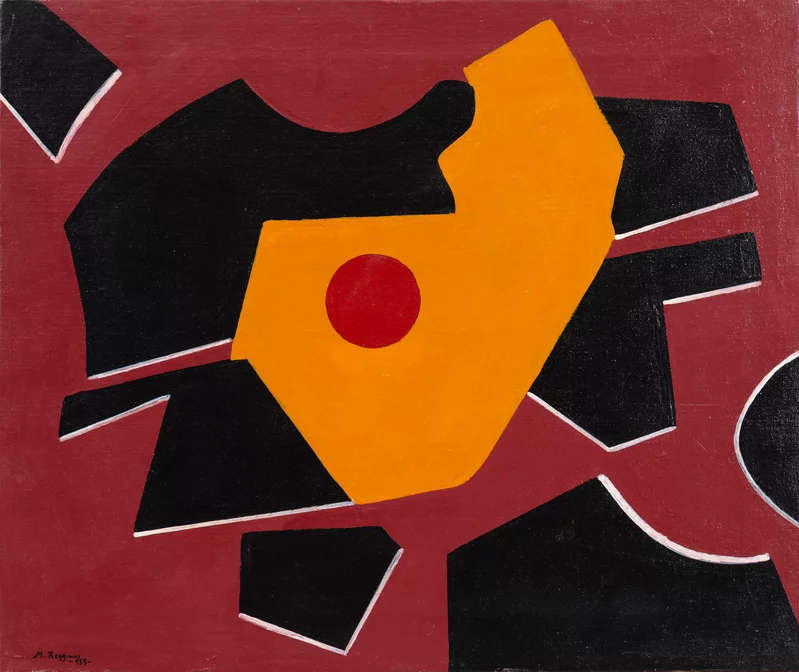
Giosetta Fioroni (Rome, 1932), one of the greatest living artists of the second half of the 20th century, certainly needs no introduction. Born into a family of artists, Giosetta Fioroni is among the most eclectic artists: during her career she moved from silverware to canvases and drawings, to experiments with photography, to ceramics. It was in the 1990s that the artist met ceramics when, thanks to Davide Servadei, heir to the historic Bottega Gatti in Faenza, she began to create cycles of works: the Teatrini, the Case, the Scatole magiche, the Formelle, the Steli, the Cani, the 100 alberi exhibited at the Galleria Comunale d’Arte Moderna in Rome, and the Abiti. Defined by herself as hyperpictorial works because of her choice to mix engobes with iridescent majolica and third-fire glazes, Giosetta’s ceramics show an intimate cohesion between form and color, and dream, fairy tale and literary appeal coexist in them. The ceramics presented here in a solo exhibition were made by the artist at Bottega Gatti and are rare works that the gallery has collected over time. This Teatrino is inspired by a work of the same name by Matisse.
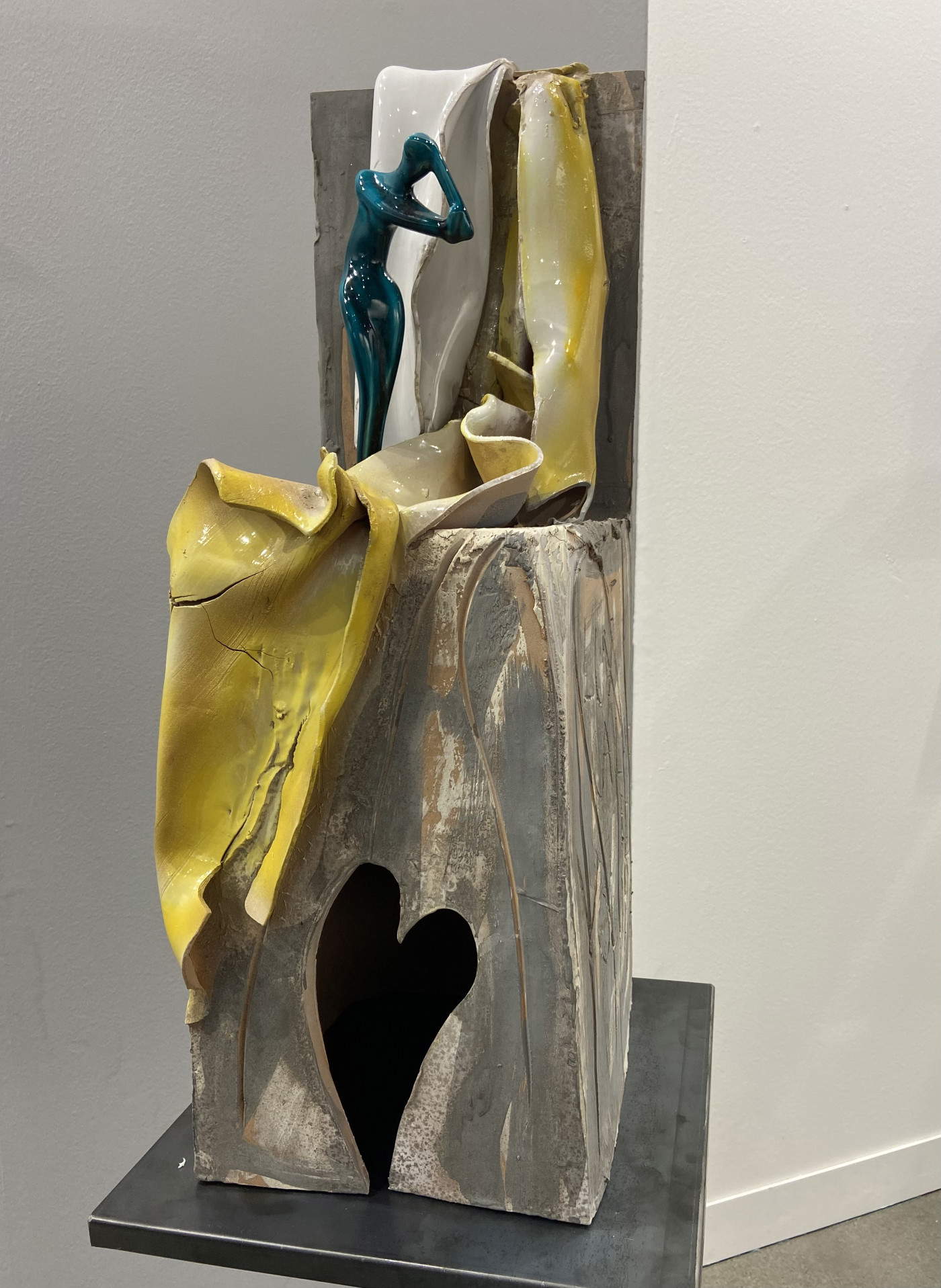
Fabrizio Plessi (Reggio Emili, 1940), is an artist interested in the interaction between technology and matter, treating the latter as a sculptor would marble. He is a leading figure in Italian video art, distinguished for being the first to transform the television monitor into a true artistic medium, where unstoppable streams of water and digital fire have been flowing since 1974, when he made his first video installation. In his projects, video merges with architecture and primary materials such as coal, wood, marble, travertine and iron. Through his works, Plessi explores the fluidity of water, its power that transcends the tangible boundaries of the artwork, the glow of lightning that rips through the nighttime darkness, and the incandescence of fire. Particularly relevant are his site-specific installations, conceived for ancient, Gothic, Renaissance and monumental spaces such as St. Mark’s Square in Venice, the Valley of the Temples in Agrigento and the Sala dei Giganti at Palazzo Te in Mantua, evidence of his profound respect for classicism, also confirmed by the electronic sets he creates.

Originally from Cornwall, David Tremlett (Dartford, 1945) is an artist who works in different media: he has made installations, sculptures, drawings; his permanent intervention in the Langhe at the Barolo Chapel is well-known. But he has also made tapestries and carpets, such as those exhibited here. “The project for the Antonio Verolino Gallery began in early 2015 with a proposal for a tapestry, which was followed by a proposal for a rug. The tapestry would be made at Felletin, Aubuson, France, founded in 1867, which over the years has worked with artists such as Pablo Picasso, Le Corbusier, Alexander Calder, Victor Vasarely, Fernand Legér, Sonia and Robert Delaunay, Josef Albers, and more recently with Fernando Botero, Etel Adnan, and Beatriz Milhazes. The carpet, on the other hand, was hand-knotted in Pakistan. I spent the next few months tracing idea after idea on paper until I completed 4 tapestry designs and 4 carpet designs,” the artist explained.

A great essayist, poet, and visual artist, Etel Adnan (Beirut, 1925 - Paris, 2021) embraced a wide range of media throughout her artistic career, including painting, drawing, tapestries, film, ceramics, and artist’s books. Inspiring his writing and later his artwork was the landscape, its history and his emotional and physical response to it. For Adnan, landscape is mixed with memory, especially the feeling one gets from relocation: born and raised in Lebanon, but she has lived, studied and worked in France and California all her life. The work on display is an abstract composition consisting of squares of different colors that the artist made by directly applying paint material to the canvas.
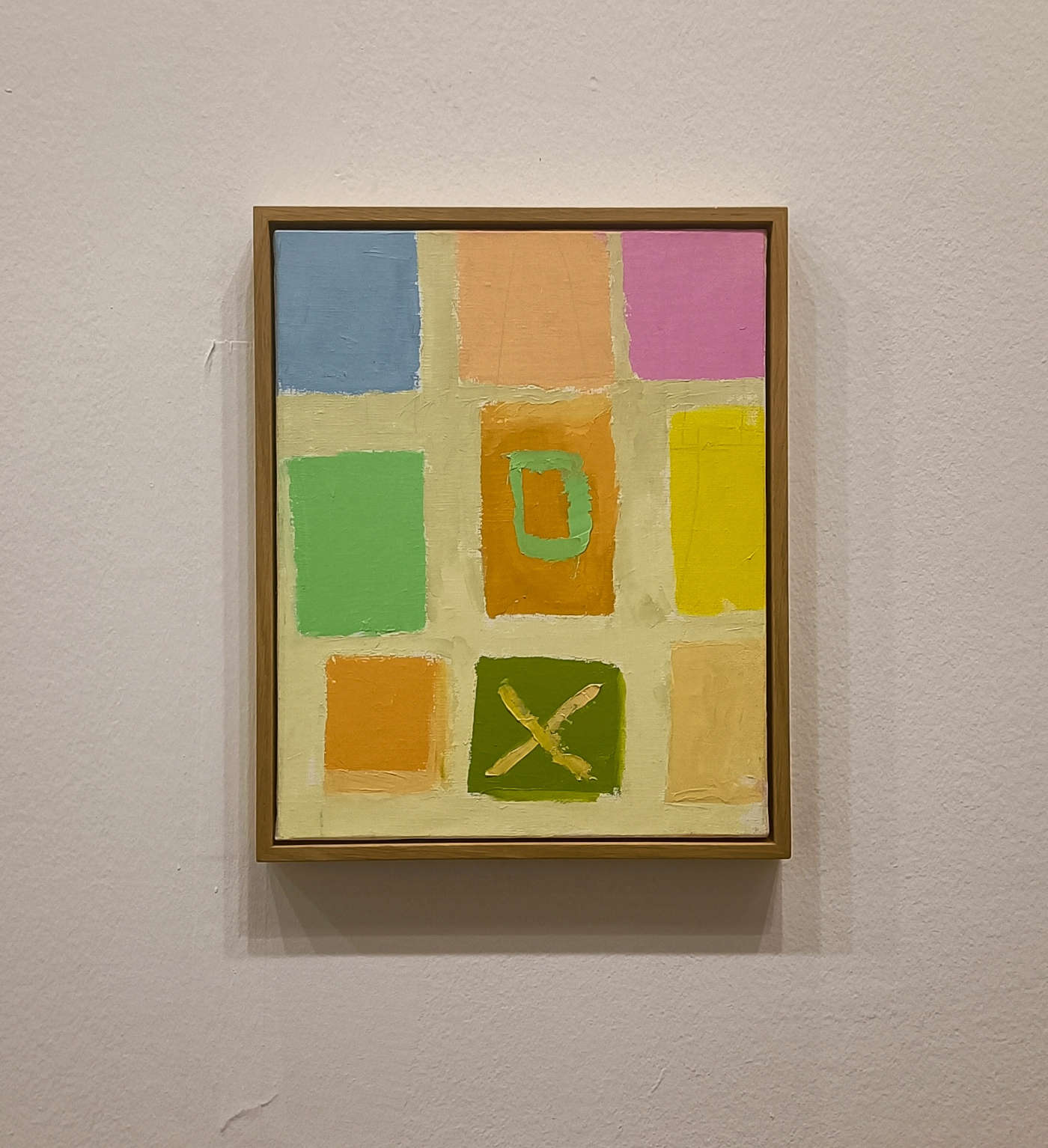
Francis Alÿs (Antwerp, 1959) addresses themes focused primarily on the patterns of urban sites and the political dynamics of conflict areas. Through poetic narrative, he examines modernism in Latin America and border areas affected by political tensions, questioning the relevance of poetic acts in such complex contexts. Alÿs starts with simple actions performed by himself or others, documenting them through a variety of media. His works often seem like documents or traces of an artistic practice, using video, film, postcards, painting and drawing. In the repetition and continuous transmission of his works, the artist seeks to create a larger narrative, trying to materialize a missing episode or to deepen the meaning of what has been created. What makes the artist’s practice so compelling is his ability to address complex political issues through poetic acts, transforming his art into a form of exploration and reflection on contemporary society.
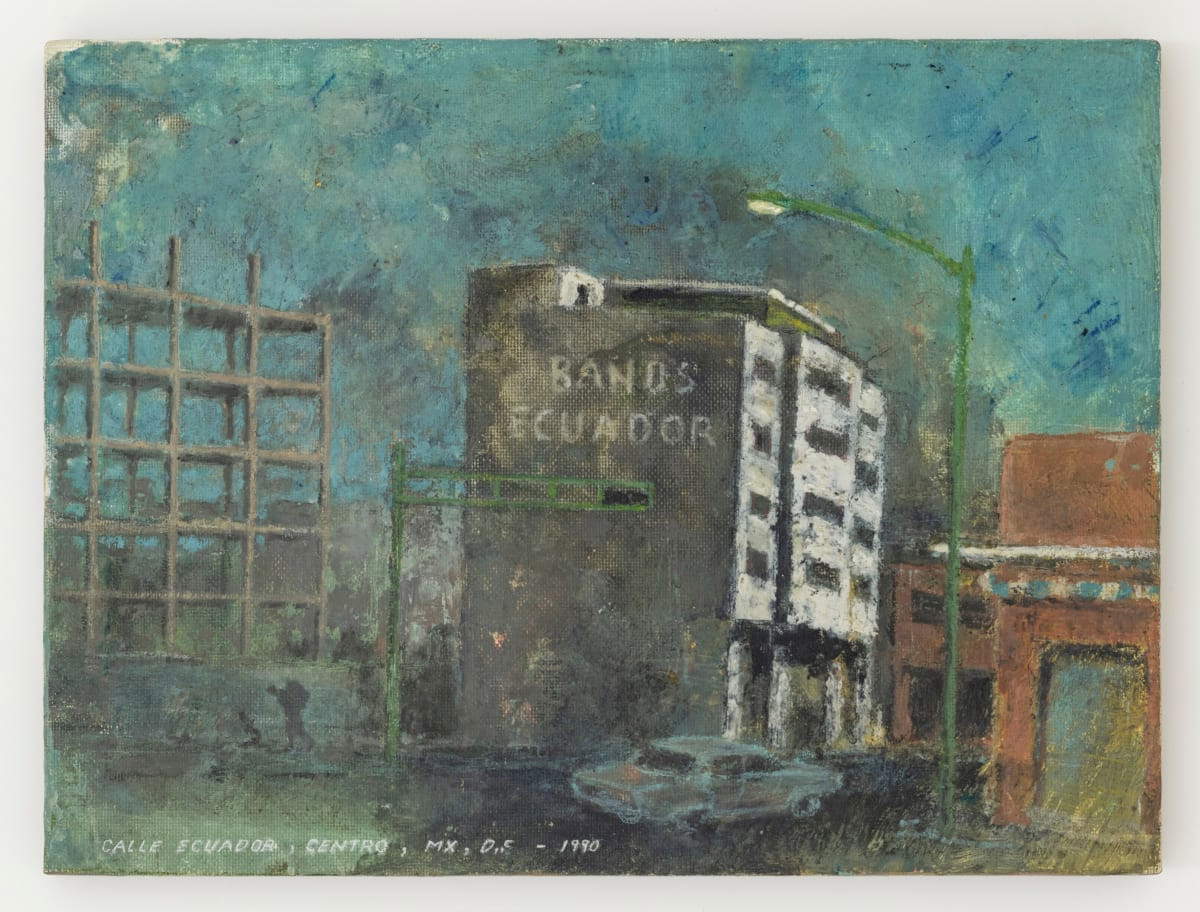
Ai Weiwei (Beijing, 1957) lived in the United States for a significant period beginning in 1981, later settling in New York for ten years. During his stay in New York, he was deeply impressed by the works of artists such as Andy Warhol and Marcel Duchamp. Through his art, Ai Weiwei has become a voice for human rights and a defender of freedom of expression. Thanks to his provocative instincts, he manages to navigate between politics, activism and artistic research, emerging as one of the leading symbols of the struggle for freedom of expression in China and around the world. His artworks, which range from installations to videos, photography to sculpture, reflect ancient Chinese history as well as modern contexts. Ai Weiwei likes to superimpose the contemporary on the ancient, the future on the present, using traditional techniques, images and metaphors of Chinese culture. Indeed, his main goal is to highlight the social contradictions that exist between the individual and the community in the contemporary world, offering a critical and profound look at society through his art.

Here is what is perhaps the most expensive work at the fair. Lucio Fontana (Rosario, 1899 - Comabbio, 1968) is the author of an art form based on the fusion of time and space. Crossing traditional boundaries between architecture, sculpture and painting, Fontana produced works that engage viewers in emotional experiences, opening new avenues of research in contemporary art. Spatial Concept, Waiting is part of the Tagli series, a cycle of works that occupies a prominent position in Fontana’s artistic corpus and coincides with his full artistic maturity. Made with a Stanley cutter, the Cuts feature vertical slits running across the surface of the work, creating single central openings or rhythmic sequences of multiple cuts. Each slit reveals its own identity and can vary in the degree of convexity. Fontana’s approach to sculpture and painting has therefore profoundly influenced subsequent generations of artists, helping to redefine the limits of artistic expression and explore the relationship between matter and void, form and space.
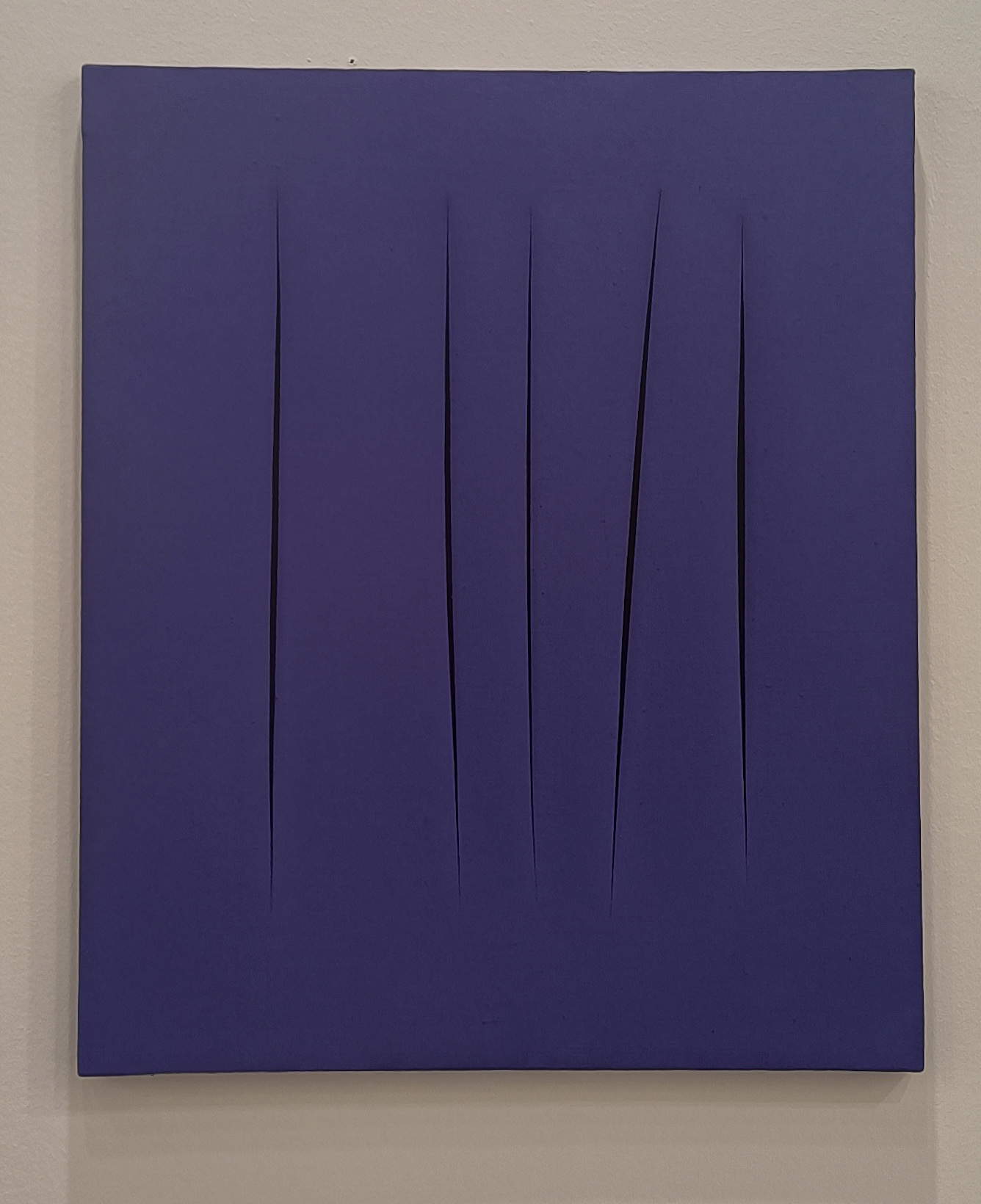
Warning: the translation into English of the original Italian article was created using automatic tools. We undertake to review all articles, but we do not guarantee the total absence of inaccuracies in the translation due to the program. You can find the original by clicking on the ITA button. If you find any mistake,please contact us.